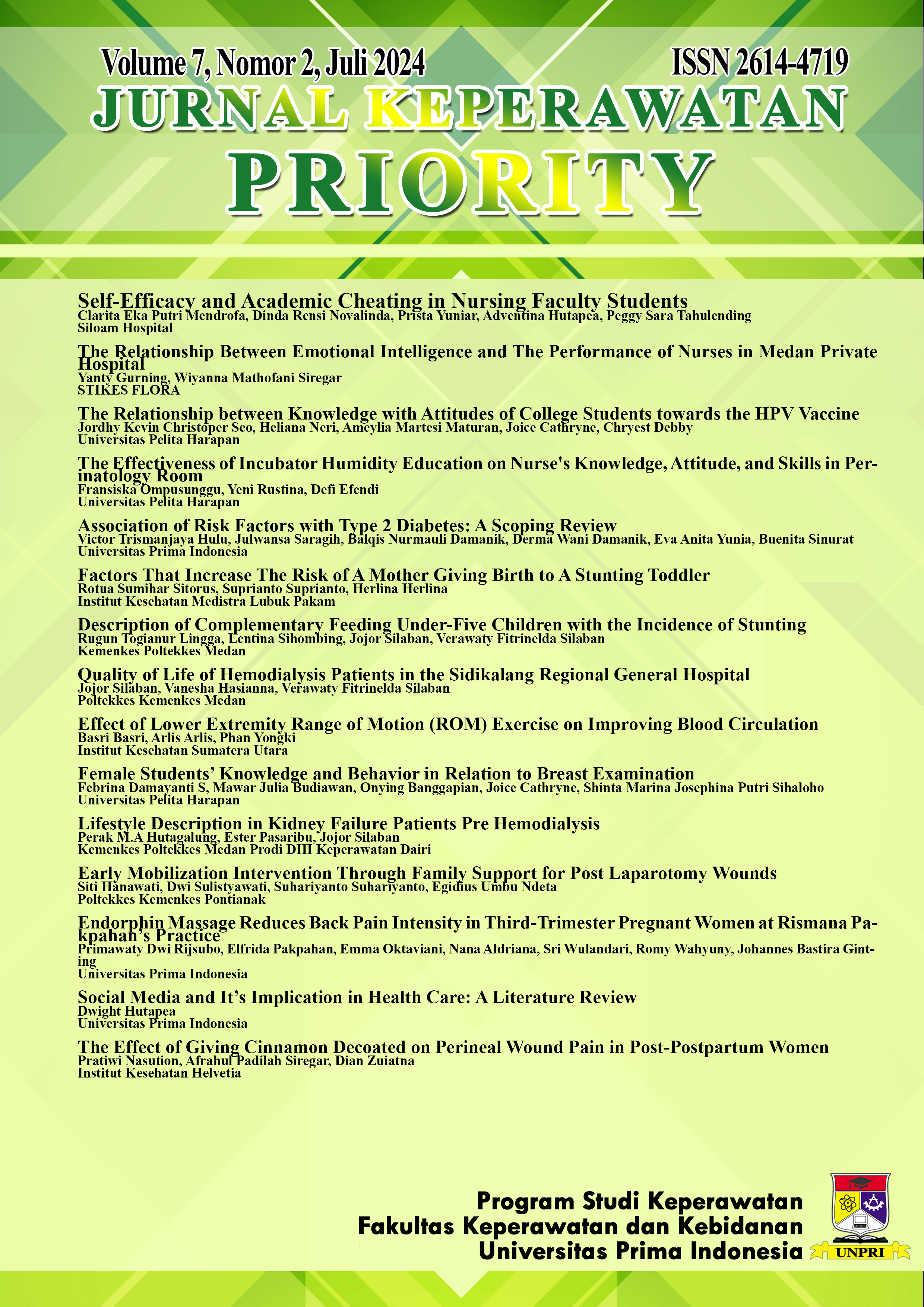Description of Complementary Feeding Under-Five Children with the Incidence of Stunting
DOI:
https://doi.org/10.34012/jukep.v7i2.5301Keywords:
stunting, complementary, feeding, childrenAbstract
The government has made various efforts to reduce the incidence of stunting in children under five, but to date, it has not shown maximum results. Stunting is a condition where a child has a shorter height than children of the same age, which means that the child's height is below the normal value. Efforts are made to reduce the prevalence of stunting, among others, by monitoring child growth and development, organizing supplementary feeding activities, or providing MP-ASI. Complementary feeding is food or drink that contains energy and nutrients given to infants or children aged 6-24 months to meet nutritional needs other than breast milk. The purpose of the study was to determine the description of complementary feeding in under-fives with the incidence of stunting. This study used descriptive quantitative research methods with a population of 43 stunted clowns using a total sampling technique. The results showed that the description of the provision of complementary foods for stunting was mostly lacking (69.7%) and the incidence of stunting showed a short category (76.7%) and very short (23.3%). Suggestions. Provide health education about complementary feeding for infants and health education about stunting to parents, especially mothers.
Downloads
Published
How to Cite
Issue
Section
License
Copyright (c) 2024 Rugun Togianur Lingga, Lentina Sihombing, Jojor Silaban, Verawaty Fitrinelda Silaban

This work is licensed under a Creative Commons Attribution 4.0 International License.
Authors who publish their manuscripts through the Journal of Keperawatan Priority agree to the following:
- Copyright to the manuscripts of scientific papers in this Journal is held by the author.
- The author surrenders the rights when first publishing the manuscript of his scientific work and simultaneously the author grants permission / license by referring to the Creative Commons Attribution 4.0 International License to other parties to distribute his scientific work while still giving credit to the author and the Journal of Journal Keperawatan Priority as the first publication medium for the work.
- Matters relating to the non-exclusivity of the distribution of the Journal that publishes the author's scientific work can be agreed separately (for example: requests to place the work in the library of an institution or publish it as a book) with the author as one of the parties to the agreement and with credit to sJournal ofJournal Keperawatan Priority as the first publication medium for the work in question.
- Authors can and are expected to publish their work online (e.g. in a Repository or on their Organization's/Institution's website) before and during the manuscript submission process, as such efforts can increase citation exchange earlier and with a wider scope.

















